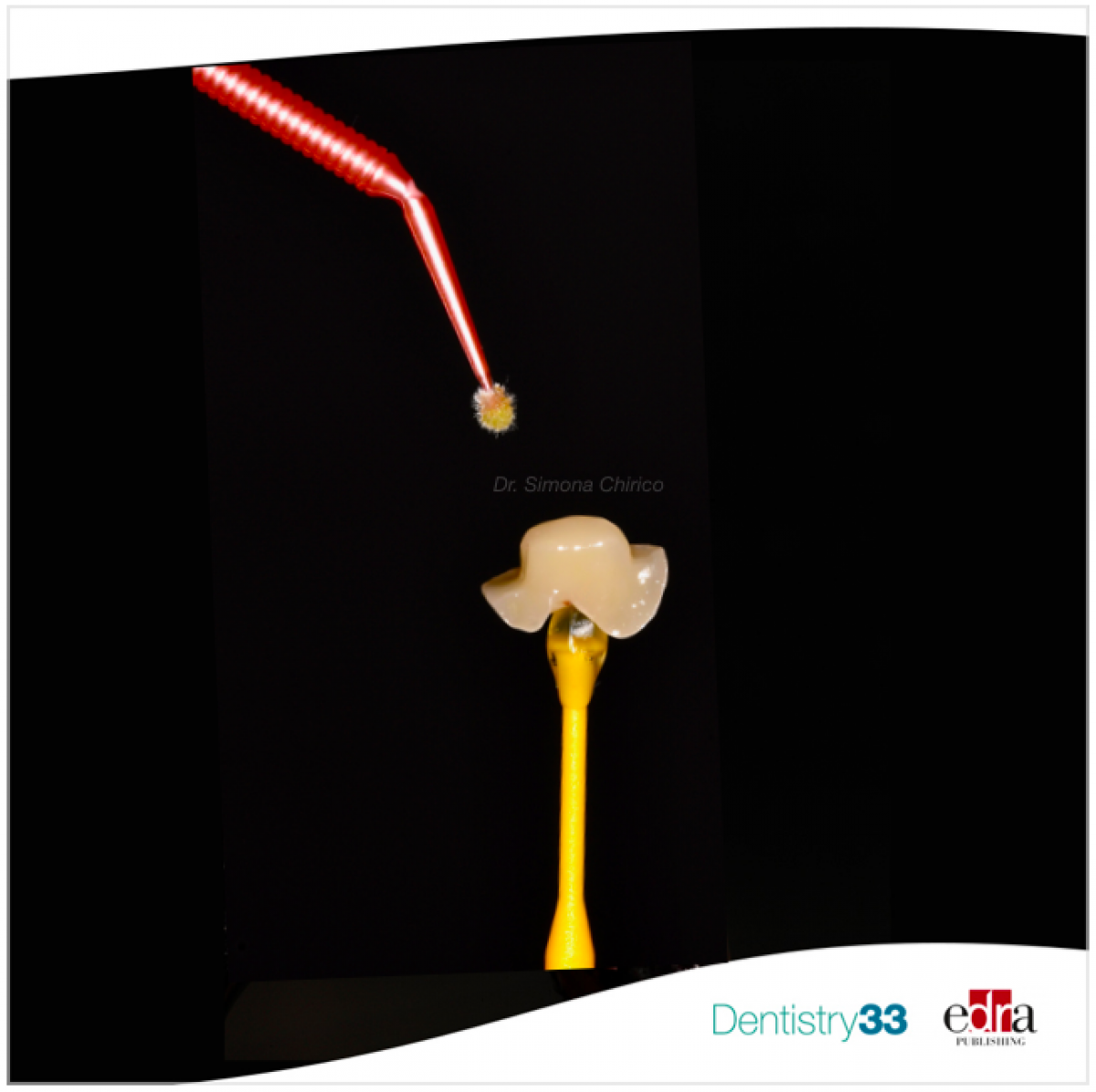
Indirect resin composite restorations: which cement to choose?
Simona Chirico
Resin composite materials, with their excellent mechanical properties and aesthetic properties, are now considered the materials of choice in dental restorations. In addition to direct fillings, composites are also indicated for indirect restorations, which differ from direct restorations in the method of polymerization that is performed in the laboratory, which causes a greater degree of monomer conversion and less shrinkage, thus limiting the volumetric shrinkage to the thin layer of concrete. The cementation process of indirect inlays is considered a critical step determining the longevity of the restoration itself. It may be difficult to choose the most appropriate resin cement to use. Resin cements can be classified, depending on the pretreatment of the tooth substrate and the treatment of the smear layer, into:
- etch-and-rinse,
- self-etch e
- self-adhesive.
Materials and methods
In a randomized clinical trial, to be published in the Journal of Dentistry in September 2021, the authors clinically evaluated the 5-year clinical performance of indirect composite inlays cemented with three different resin cement strategies in class II MODs. . This study was conducted following CONSORT guidelines. Forty patients with three large cavities indicated for indirect MOD class II restorations were enrolled in the current study. Then, 120 indirect composite inlay restorations (SR Nexco) were placed and cemented with three different resin cement strategies (n = 40); an etch-and-rinse cement (Variolink N), a self-etch cement (Panavia F2.0) and a self-adhesive cement (RelyX Unicem). These restorations were evaluated at 1 week (baseline), and at 1, 3 and 5 years using modified USPHS criteria. Statistical analyzes were performed with the Wilcoxon and Friedman tests with significance level set at 0.05.
Results
For all groups, no loss of restorative material or recurrence of caries was reported after 5 years of follow-up. In both the self-etch Panavia F2.0 group and the RelyX Unicem self-adhesive group the resin cements showed significant differences between the evaluation periods with regard to marginal discoloration and marginal adaptation (p = 0.03). At baseline, only in 8 cases belonging to the etch-and-rinse resin cement group (Variolink N) did post-operative sensitivity occur which was relieved after a short time (p = 0.04).
Conclusions
From the data from this in vitro study, which must be confirmed in other similar studies, it can be concluded that all three resin cement strategies tested show acceptable clinical performance after 5 years. However, the etch-and-rinse resin cement group showed better clinical performance over time with regard to marginal discoloration and marginal adaptation over a 5-year follow-up period.
For additional information: Indirect Resin Composite Inlays Cemented with a Self-adhesive, Self-etch or a Conventional Resin Cement Luting Agent: A 5 Years Prospective Clinical Evaluation
 Related articles
Related articles
Resin composite materials, with their excellent mechanical properties and aesthetic properties, are now considered the materials of choice in dental restorations. In addition to direct fillings,...
 Read more
Read more
Editorials 10 October 2025
With proud smiles and crisp white coats, ninety-three learners from the DDS Class of 2029 and the International Dentist Pathway Class of 2028 marked the start of their dental careers at the UCSF...
Periodontology 10 October 2025
Continuous professional development (CPD) in Periodontology refers to the overall framework of opportunities that facilitate a life-long learning practice, driven by the learner-practitioner and...
TheraBreath, the #1 alcohol-free mouthwash brand in the U.S.*, has introduced a new line of dentist-formulated, clinically tested toothpastes designed to support professional oral care...
News 10 October 2025
New officers and trustees were installed at the Minnesota Dental Association’s Leadership Conference on September 19 in Minneapolis.
News 10 October 2025
Smartee Denti-Technology today announced that Professor Gang Shen, its Chief Scientist and Executive President of TaiKang ByBo Dental, has once again been named to the World’s Top 2% Scientists...











